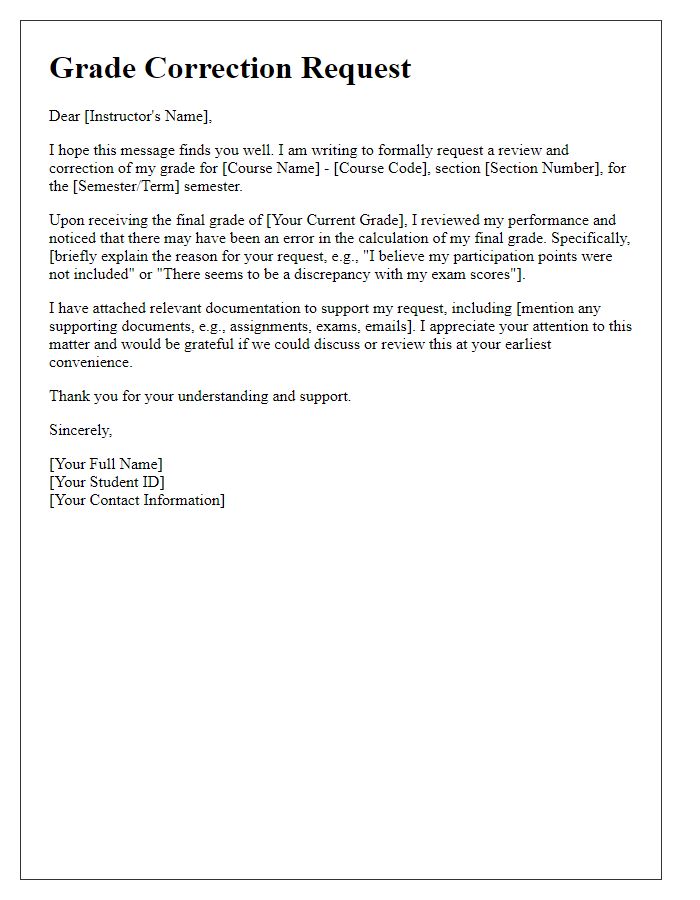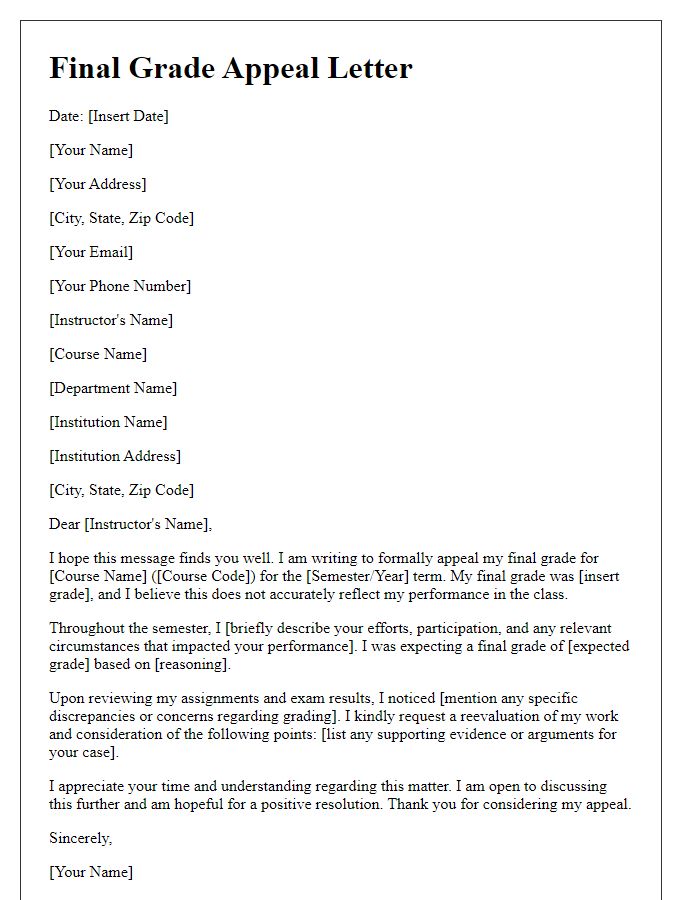Have you ever found yourself questioning a grade you received? It can be frustrating to feel that your hard work hasn't been accurately reflected in your academic performance. Writing a letter to address a grading discrepancy might seem daunting, but it's an essential step toward clarity and resolution. Let's dive in and explore how to effectively communicate your concerns in a respectful and constructive mannerâread on to discover a helpful template!

Clear identification of student and course details
In a formal context addressing grading discrepancies, clear identification of the student is essential. Student name, such as Emily Johnson, along with the unique student ID number, for instance, 12345678, should be included. Course details must specify the course name, like Introduction to Psychology, and the associated course code, such as PSY101. Additionally, the semester and year, for example, Fall 2023, should be documented to provide context for the grading period. This information will facilitate the review process by the academic institution when assessing the reported discrepancies.
Specific description of the discrepancy
A grading discrepancy can significantly impact a student's academic record, particularly when it pertains to a specific assignment in a course. For instance, a research paper submitted for History 101, which received a grade of 75% as indicated on the online grading platform, differs from the 88% handwritten note provided by the instructor during office hours. The grade posted does not reflect the feedback on content analysis or critical thinking, areas where the student excelled according to the instructor's comments. This inconsistency raises questions regarding the accuracy of submitted grades and the overall grading process at institutions such as Springfield University. A clear resolution of this matter is paramount for maintaining academic integrity and providing clarity for students regarding their achievements.
Supporting evidence or documents
When addressing grading discrepancies, presenting supporting evidence is crucial for a clear understanding of the situation. Documentation may include graded assignments, feedback from instructors, or official grading rubrics from courses, ensuring acknowledgment of desired standards and expectations. For example, if a student believes their final exam was graded unfairly, they should include a copy of the exam paper (which could contain multiple-choice questions, essays, or problem-solving sections) alongside the feedback received, illustrating specific areas of contention. Additionally, evidence of communications with teaching staff, such as emails discussing concerns about grading criteria or misunderstandings, provides context for the dispute. If available, referencing academic policies from the institution regarding grading disputes will further strengthen the case, clearly outlining the protocol and expectations surrounding the issue.
Request for review or correction
A grading discrepancy can significantly impact a student's academic progress and overall GPA. Instances of discrepancies, such as incorrect recorded scores, overlooked assignments, or miscalculated averages, necessitate a careful review of the grading system utilized by the educational institution. Furthermore, the specific course context and the instructor's grading policies play crucial roles in understanding the situation. Addressing this issue requires direct communication with academic personnel, typically involving submission of a formal request for review or correction. This process often entails providing detailed evidence, such as assignment submissions (like essays or projects), original grade postings, and documented communication related to assessment criteria. The timely resolution of grading discrepancies is also vital, as semester deadlines can constrain a student's ability to appeal, thus influencing academic standing and future opportunities for scholarships or advanced coursework.
Clear and respectful tone
In a classroom setting, grading discrepancies can significantly impact a student's academic journey. It's crucial to address these issues promptly and respectfully to maintain open communication. A clear and professional report should begin by identifying the course name and instructor's name, followed by the specific assignment or exam in question. Be sure to include the date of the grading and the originally assigned grade versus the expected grade based on rubric guidelines or previous feedback. Providing supporting evidence such as copies of the assignment, comments from the instructor, or referenced grading criteria can strengthen the case for a review. Conclude with a request for clarification regarding the grading process and an expression of appreciation for the teacher's time and consideration, fostering a positive and collaborative atmosphere for resolution.













Comments